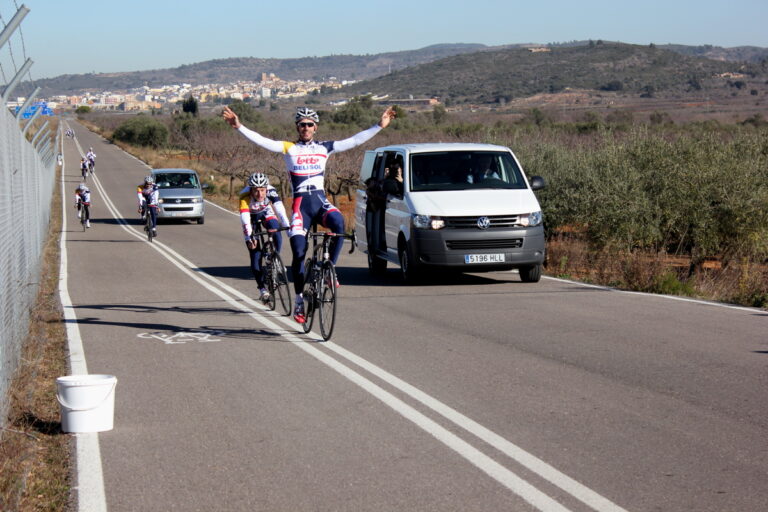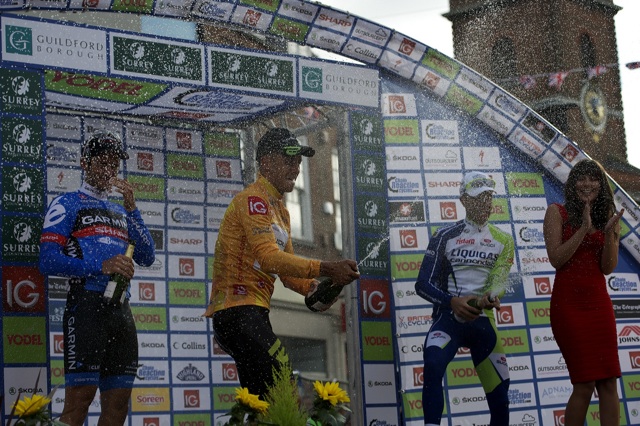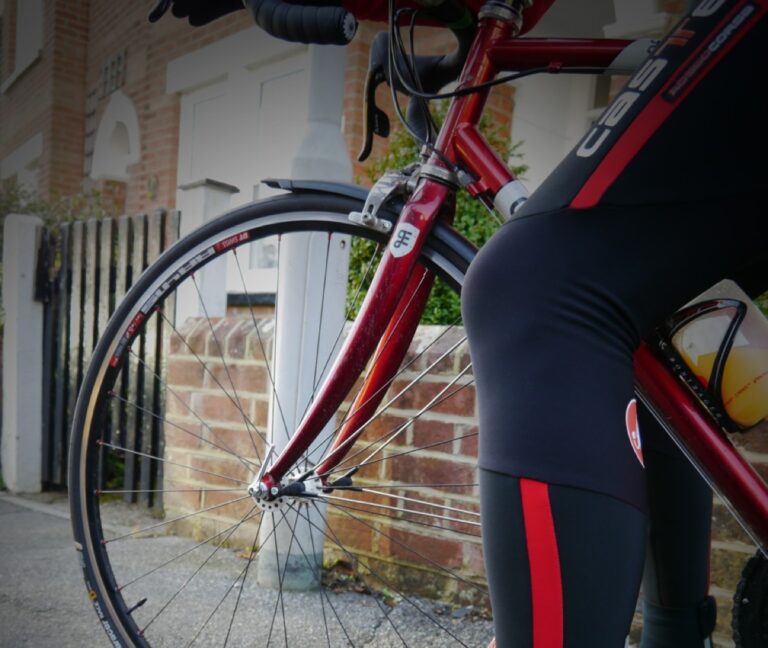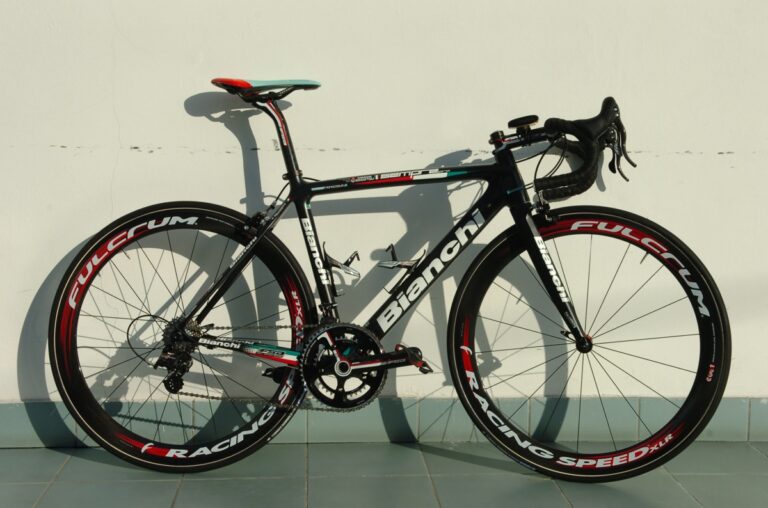The first of our December test bikes is the Vivelo ARC RS.
Readers who enjoyed this year’s Vuelta a Espana, specifically Antonio Piedra’s victory on stage 15 for Caja Rural, one of three teams supplied by Vivelo, will recognise the brand.
The steed we have on test is a machine of sculpted appearance, dressed in a full Shimano 105 groupset. Let’s take a closer look.

Many of the features of the ARC RS frameset are now standard on contemporary, aero profiled carbon frames, but are realised here with real flair.
The most striking feature, the giant downtube, is box section, and a full 65mm tall in the side profile at its centre, halfway between headtube and bottom bracket.
It joins the headtube at the latter’s 1.5 inch lower bearing, so we’re expecting plenty of stiffness at the front end of the bike. While on the subject of the headtube, it’s just 140mm tall, and a welcome indication of racy intentions.
The bottom bracket shell is another unmissable feature: ‘huge’, about covers it. The downtube gains another half centimetre in height as it meets the bottom bracket, rising to a towering 70mm. The shell, 65mm across its lower surface, surprisingly houses an external bottom bracket. This isn’t necessarily a failing (interference fits are not universally popular, and external bottom brackets retain a following for their ease of maintenance), just slightly out of kilter with the rest of the design, which is defiantly modern.
The oversized theme continues at the chainstays, which are a massive 60mm deep at their union with the bottom bracket shell; an indication, perhaps, that the stiffness we’re expecting at the front end could replicated at the rear.

They form a close channel for the rear wheel at the bottom bracket, before splaying distinctly to accommodate the rear axle. We’ve seen something similar on offerings from Orbea.
The chainstays are one of several interesting design features in the rear triangle. The seat tube cuts away around the rear wheel, offering barely a centimetre of clearance and we hope rapid acceleration.
Further intrigue can be found in the profile of the seat stays, which descend from the seat cluster at a steep trajectory, before curving back towards the downtube halfway en route to the drop out. Curved seat stays are often employed to induce compliance and so comfort. We’ll let you know. Additionally, in this instance, they play a role in maintaining the integrity of the very tight rear triangle.
The top tube is another heavily sculpted affair, flattened on its upper side, which forms the base of an inverted pyramid. It’s 50mm broad at the headtube (another portent of front-end stiffness) but loses 20mm on its journey to the seat tube.
Other details of note include the subtle elbow bend where the chainstay meets the dropout (see BMC’s Gran Fondo for a more exaggerated example), another popular strategy among frame builders seeking comfort, and the internal cable routings.
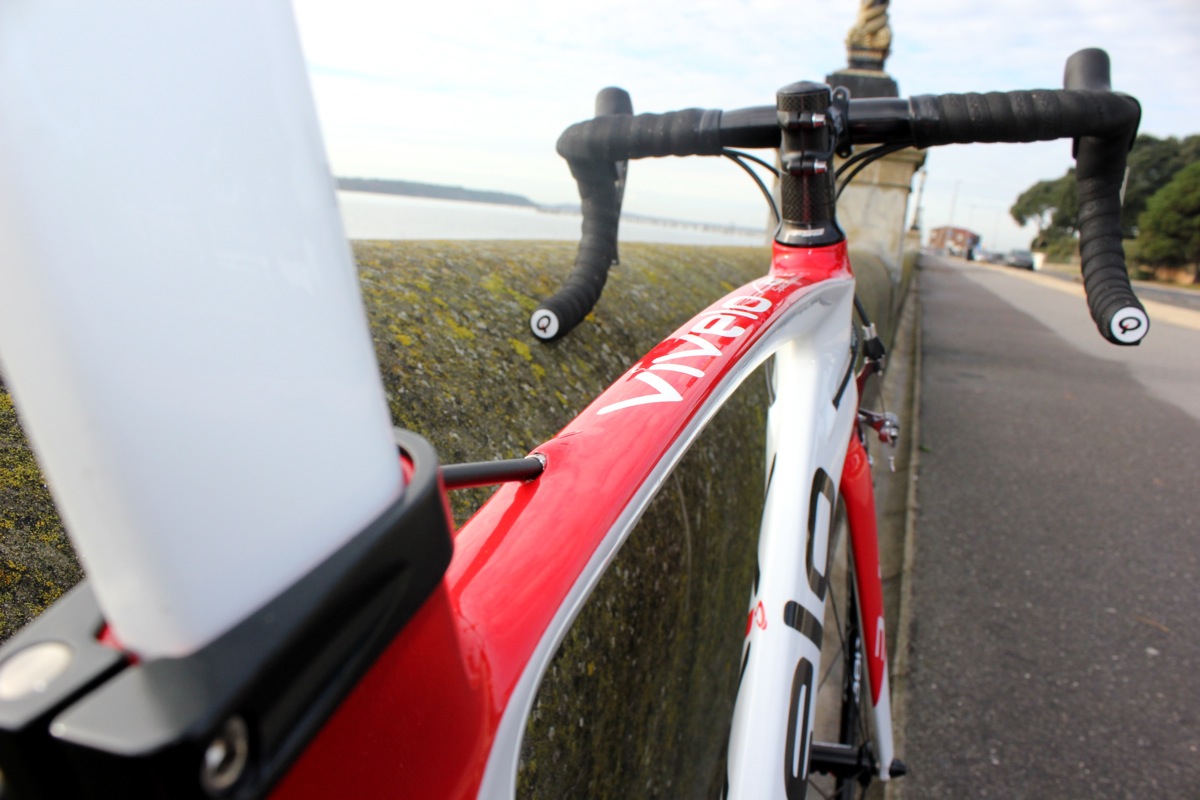
The full carbon fork is an understated affair, especially in comparison to the contoured profiles of the frame tubes. Its distinguishing feature is the 1.5” lower bearing.
Having examined the chassis, our attention turned to the components. Shimano’s 105 groupset is always a welcome sight, made more so by Vivelo’s resolution to deploy it, as surely intended by the engineers who designed it, in full. There’s no corners cut here: shifters, mechs, chainset, and brake calipers are all matched. Full marks.
The wheelset looks like another considered affair: TX100 aluminium clinchers (20 radially laced spokes at the front, 24 cross-laced on both sides at the rear) from respected Italian house, Marchisio, shod with RCUK favourites, Schwalbe Ultremo ZX tyres; the latter perhaps not ideally suited to the time of year, but a welcome inclusion in the specification, nonetheless.
Finishing kit is comprised of Vivelo’s own carbon seat mast, topped with a Pro Logo Kappa Evo T 2.0 saddle, and a smartly functional Deda RHM02 bar and Zero2 stem combination. Again, top marks to Vivelo for adhering to dedicated manufacturers and not opting for generic kit.
The ARC RS is available in this country with a custom specification. The build described above costs £2195. Add £210 for Shimano Ultegra 6700/6750, or £750 for 11-speed 9000-series Dura Ace. There are mechanical Campagnolo options too. Add £150 for Campagnolo Athena, and £800 for Super Record. Both are 11-speed.
There are eight frame sizes offered from 46cm to 61cm.
Finally, a word on the appearance of the ARC RS. Its colour scheme accentuates the sculpted tube profiles (red on the flattened upper side of the top tube, and on the flattened under side of the down tube) and the contrast of red and white makes it one of the prettiest bikes we’ve seen in a while.
Like the components, however, the appearance is subject to customer preference. Custom colour schemes are offered in gloss or matt finishes. A ‘natural carbon’ finish is also an option.
Will the head turning appearance of the Arc RS be matched by its performance? We’ll be finding out in the weeks ahead. Check back soon for a full review.


